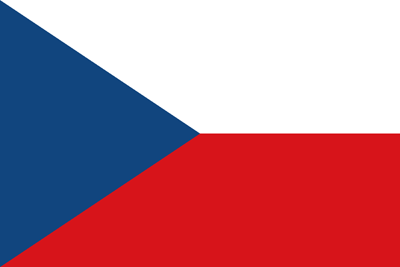Lecture 3. Subkingdom Protozoa (General Characteristics).
General Characteristics of the Subkingdom Protozoa
Number of Species.
There are over 70,000 species of unicellular and colonial animals classified into five phyla. We will focus in detail only on the Phyla Sarcodina and Ciliophora.
Habitat. Protozoa inhabit all life environments where water is present. Many live in seas and freshwater bodies. Some species inhabit moist soil, and around 3,500 species have become parasitic, causing diseases in humans, animals, and plants.
Body Structure.
As the name of the subkingdom suggests, the entire body of these animals consists of a single cell. However, this cell possesses all vital functions: metabolism with the environment, irritability, movement, and the ability to reproduce. In the cellular body, besides typical organelles found in animal cells, there are specialized organelles characteristic of protozoa. Let's examine them.
Movement organelles – pseudopodia, flagella, or cilia.
Nutrition organelles – food vacuoles, cell mouth, cell pharynx, and anal pore (cytopyge).
Excretion and osmoregulatory organelles – contractile vacuoles.
Reproduction is controlled by the nucleus, and some complex protozoa may have multiple nuclei.
Defense and attack organelles – trichocysts (special stinging structures located along the cell's cytoplasm).
The shape of the body in most protozoa is constant, with exceptions being some sarcodines (e.g., common amoeba).
Nutrition.
Protozoa are divided into two groups based on their nutrition:
Heterotrophs. These include predators, parasites, and saprophytes.
Mixotrophs (from the Greek "mixer" – to mix) have a mixed mode of nutrition – autotrophic (having chromatophores and capable of photosynthesis in the presence of light) and heterotrophic. These are the most complex protozoa, and they present a classification dilemma for taxonomists. For example, where should the green Euglena be classified? The solution was as follows: zoologists classify it under the class Plant Flagellates of the Phylum Euglenozoa, while botanists classify it under the division Euglenophyta of lower plants.
Reproduction.
If protozoa are in a favorable environment, they reproduce asexually at a rapid rate. Parasites hold the record for the number of offspring. Their reproduction is known as multiple fission or schizogony.
Sexual reproduction may involve gamete fusion or conjugation – a temporary fusion with exchange of genetic material (in ciliates). In primitive amoebas, sexual reproduction is unknown, though they may simply conceal it.
The development of protozoa is characterized by a specific life cycle, which depends on the lifestyle and environmental conditions. This cycle alternates between sexual reproduction and subsequent multiple asexual divisions.
Survival in Unfavorable Conditions.
Phylum Euglenozoa
Class Sarcodina. A first-person story.
There are 11,000 species of us. We live in marine and freshwater bodies, moist soil, and the bodies of humans and animals.
I am the common amoeba, although I consider myself a unique creation of nature. My Latin name, Amoeba proteus, is directly related to Greek mythology. The sea god Proteus (son of Poseidon) could change his appearance beyond recognition. For me, changing my form is no problem. My cytoplasm flows into various parts of the cell, where it forms what I call pseudopodia, or "arms" (scientists call them pseudopodia). I use them primarily for active amoeboid movement, i.e., I use them as legs. I can move at a speed of 200 micrometers per minute. Secondly, I can capture food with them (bacteria, algae, or tasty organic particles), i.e., I use them as arms.
Common Amoeba Shelled Amoebas (2-3), Sun Animals (4), Foraminifera (5)
Class Flagellates
There are more than 6,000 species. Most have a constant body shape. The dense peripheral part of the cell is formed by a chitin-like shell or cellulose, and may also be represented by the thickening of the peripheral cytoplasm layer (pellicle). For movement and food capture, flagella (one or more) are present. Nutrition is heterotrophic and mixotrophic. The ingestion of solid particles into the cell occurs through the cell mouth, usually located at the base of the flagellum. Freshwater flagellates have contractile vacuoles. Reproduction is mainly asexual, while sexual reproduction is observed in colonial forms.
Cell Structure of Green Euglena.
Diversity of Flagellates.
Plant flagellates include both solitary (euglena) and colonial (Volvox, Pandorina) forms. Many animal flagellates have become parasitic, causing diseases in humans and animals (Giardia, Trypanosoma, Leishmania).
Phylum Ciliophora (Ciliates)
This phylum includes about 6,000 species of the most organized protozoa. They are characterized by the following features:
-
Presence of numerous cilia for movement or food capture
-
Presence of two nuclei (nuclear dualism). The large macronucleus controls the cell's activities, while the small micronucleus participates in genetic information transfer during reproduction.
-
Most ciliates possess trichocysts – short rods that shoot out as thin threads to strike prey (or enemies).
-
Digestion occurs in specialized structures. The ciliate’s cell contains a preoral funnel, at the bottom of which is the cell mouth. It leads to the cell pharynx, which ends in a digestive vacuole in the cytoplasm. The vacuole is pinched off and absorbed into the cytoplasmic flow, undergoing enzymatic breakdown of food. Undigested particles are expelled through the cytopyge.
-
Sexual reproduction is conjugation, where the micronucleus plays a major role. Asexual reproduction occurs through binary fission.
Structure of Paramecium
Diversity. Most ciliates are predators that live freely (Paramecium, Vorticella), but some are sessile (suctorial ciliates), and there are also parasitic ciliates (Balantidium, causing intestinal diseases).
Phylum Apicomplexa
This phylum includes around 2,000 species of parasitic protozoa, one of which is the malaria parasite, Plasmodium, which causes malaria in reptiles, birds, and mammals. The malaria parasite is transmitted by mosquitoes. When bitten, the parasite enters the human body, destroying liver and blood cells (erythrocytes), causing fever, weakness, headaches, and chills. Only asexual reproduction occurs in humans, so they are intermediate hosts. Sexual reproduction happens inside the mosquito, the definitive host.
The Role of Protozoa in Nature and Human Life -
They are an important link in the food chains of biocenoses.
-
They are causative agents of diseases in humans and animals.
-
Colonial protozoa are ancestors of multicellular animals.
-
They participate in soil formation.
-
Symbiotic protozoa assist in digestion.
Questions
Why do marine protozoa lack contractile vacuoles?
Prove that limestone deposits have a biogenic origin.
Propose an experiment to demonstrate the complex path of food in a ciliate cell from the oral funnel to the cytopyge.
Describe the routes of human infection with parasitic protozoa.
What is the positive role of protozoa for humans?
SEND ANSWERS TO THE EMAIL ADDRESS:
Road Safety for Parents: Protecting Children from Traffic Hazards
M. Y. Lermontov - From the Poem "Circassians"
Report on Road Safety Awareness Activities Held During the Nationwide Campaign “Attention, Children!” in Starokaipanovo Secondary School and Its Branches in the 2016–2017 Academic Year
Material and Technical Support for the Educational Process, Including Accessibility for Students with Disabilities and Special Educational Needs

 Deutsch
Deutsch
 Francais
Francais
 Nederlands
Nederlands
 Svenska
Svenska
 Norsk
Norsk
 Dansk
Dansk
 Suomi
Suomi
 Espanol
Espanol
 Italiano
Italiano
 Portugues
Portugues
 Magyar
Magyar
 Polski
Polski
 Cestina
Cestina
 Русский
Русский